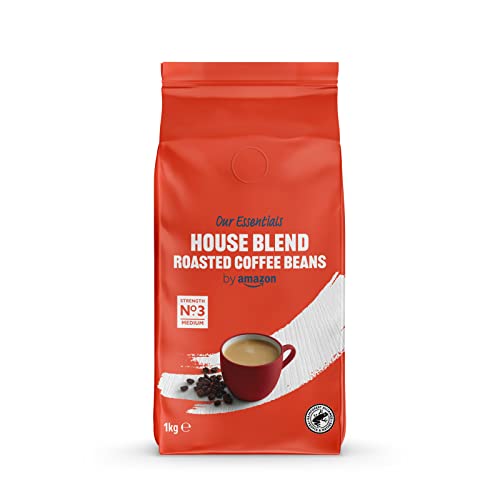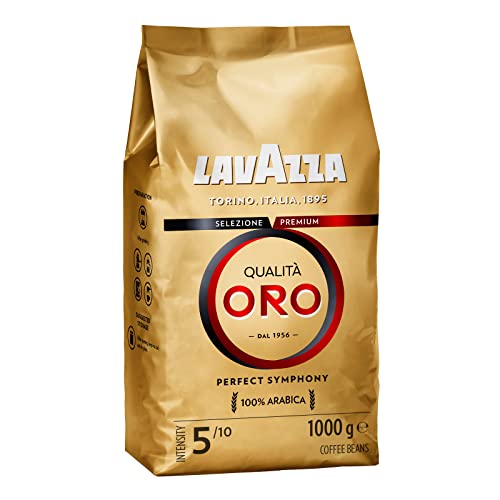Page Information

본문
 How Many Cups Can You Make From 1 kg of Coffee beans - https://telegra.ph/8-Tips-To-Increase-Your-Kimbo-Coffee-Beans-1kg-Game-05-08,?
How Many Cups Can You Make From 1 kg of Coffee beans - https://telegra.ph/8-Tips-To-Increase-Your-Kimbo-Coffee-Beans-1kg-Game-05-08,?If you're a coffee lover or oversee coffee equipment in your office, you probably often consider how many cups of coffee could be made from a kilo of beans. A basic calculation without factoring spillage and waste, or dialling in the grinder shows that a kilogram of beans can make about 142 single shots of espresso.
 Cost
CostYou can save money by purchasing coffee in large quantities. It also helps you get a more fresh, more flavourful cup of coffee. It is essential to store the coffee in a proper manner to preserve its flavor and texture. The best method to do this is to keep it in a airtight container.
The price of 1 kg coffee beans will vary based on the type you buy. If you buy whole beans, they are cheaper than ground. You should also think about how much coffee you drink every day. The average coffee drinker can make 142 cups of single-serve espresso out of one kilogram of beans.
There are numerous factors that affect the price of coffee beans, such as shipping charges warehouse storage costs, customs fees, and profits claimed by the importer. These costs can add up particularly if you purchase your beans from a large chain retailer. The price of coffee can also fluctuate because of currency exchange rates.
Coffee production began in Ethiopia where a goat herder was able to experience the energizing effects of the plant. From there the coffee plantation spread throughout the globe. Coffee is now grown in many different places, each with its own distinct flavours and particularities. The most common types of coffee include Arabica and Robusta.
When they roast, green coffee beans will lose between 15 to 18% of their original weight. The beans' water expands and reduces the volume. A 1kg bag of coffee beans contains around 8000 coffee beans. The number of cups you can create from a kilo depends on the type of coffee bean used and roasting style.
Assuming zero waste, a 1kg roasted coffee beans bag of beans will yield 120-140 cups. The typical espresso shot is 30ml of coffee and seven grams of coffee ground. One kilogram of coffee beans will last for about ten weeks if you drink two cups a day.
The amount of coffee discarded in the process of grinding is another aspect that can affect the price of a kilogram. This includes ground that is thrown away from the grinder, as well as coffee that gets spilled onto the counter. These wastes can reduce the number cups you can make from one Kilo.
Quality
The quality of the beans used to make coffee will determine how many cups of coffee you can make. The better the quality beans, the more flavorful and a more intense taste. You should stay clear of expensive beans that are old and have lost their taste. You should only purchase top-quality, fresh coffee beans from a reputable supplier.
Ask questions about the quality of the beans when you are buying coffee beans. For instance, the way that beans are stored and handled after harvesting can have a huge impact on the flavor and consistency.
Roasting beans are also influenced by the quality of the beans. The chemical reactions caused by the temperature changes during the roasting process produce the distinct flavors we associate with a good cup of coffee. If the beans are stale or roasting isn't done correctly the quality of the coffee will be diminished.
Another aspect that affects the quality of the coffee is the kind and amount of caffeine it has. You may require more coffee to achieve the desired effect If you prefer a stronger brew Some people prefer to drink it weaker and less caffeinated. In addition the grind size and the method of brewing you choose to use will also affect how much coffee is used.
Buying coffee beans in bulk is an excellent option for your coffee experience and your pocket. In addition to saving money, purchasing in bulk reduces the amount of waste generated. Moreover, it is an excellent opportunity to experiment with new coffee varieties and develop an appreciation for what you really enjoy in your coffee. The ability to experiment with various grinding methods and brewing methods will also help you increase your appreciation for coffee.
Variety
There are a variety of coffee beans on the market. Each has its own distinct flavor and aroma. Choosing the best beans for home-brewed coffee is a crucial step to achieving the perfect cup of coffee. It is also a good idea to buy 1kg coffee beans your beans from a roaster that supports fair trade practices and sustainable source. You can also choose organic or Rainforest Alliance-certified coffee beans to ensure sustainable and ethical production.
The quality of the coffee beans you choose will directly impact the amount of espresso you will get at the end. For instance, if are using an espresso machine, then you will need to use more beans than a filter coffee maker. This is because the process of espresso requires a large amount of finely ground beans which need to be compacted into a smaller space. The amount of coffee you can consume will also be contingent on your preferences for taste and the brewing method.
By purchasing whole beans, you can experiment with different grind sizes and brewing techniques. This ability to try new brews enriches your coffee experience and helps you discover your own tastes. Bulk purchases reduce packaging waste, which is good for the environment. This is because less bags and containers are required to store one kilogram of coffee. Coffee grounds, which are a product of the brewing process are also suitable for composting.
A kilo of coffee can produce between 55 to 100 cups based on your taste preferences and brewing method. Look for the highest quality beans that are affordable when shopping for coffee. Premium coffees are more flavorful and a variety of options, such as single-origin or fair-trade coffees. These higher-end coffee beans tend to be more expensive but offer a higher value for money. They are often cooked at lower temperatures to preserve the natural flavor of the bean.
Sustainability
Coffee beans are the seeds-bearing body of a coffee fruit. The fruit is red, purple or yellow with a high "fruit to seed" ratio and a thin skin. The coffee bean is a seed within the fruit. It has two kinds of caffeine, theobromine and theanine. Theobromine is stimulant, while theanine is a relaxing. The two chemicals combine in the brain to produce a sensation of euphoria after consumption. The amount of caffeine in a cup of coffee depends on the brewing method and the size of the grind. Espresso, for example is made with more beans than French drip or press coffee. The coffee brewing process also affects the amount of cups that can be made from 1 kg of beans.
A Kilo of coffee beans can yield anywhere between 55 and 100 cups, depending on the method of brewing and personal preferences. A kilo of beans should last for approximately five weeks, which is about six cups per day for a typical person. It's important to remember that a double espresso shot requires twice the amount of coffee beans as regular shots, so the number of beans is less.
To ensure that coffee is sustainable, the coffee industry is implementing a variety of strategies. These include increasing the efficiency and performance of coffee machines and reducing greenhouse gases (GHGs) during production, as well as increasing the carbon content of soil. In addition, the coffee industry has developed a variety of certification schemes to encourage sustainability. These include Fairtrade, Rainforest Alliance, and UTZ Certified. These certifications establish standards for coffee production and assist consumers identify products that are ethically and environmentally source.
Although coffee has a relatively small environmental footprint but the sourcing and transportation of coffee bean 1kg beans contributes to its global GHG footprint. Around 15% of coffee's total GHG emissions are due to international transportation. This can be reduced by reducing the use of agrochemicals in cultivation, and using more efficient water heating systems and renewable energy in processing, and roasting beans prior to export. Use of cargo ships instead of freight flights is a method to reduce GHG emission during the export and import of coffee.
- PrevMany Of The Common Errors People Do With Replacement Lock For Upvc Door 24.12.15
- Next20 Myths About Address Collection: Dispelled 24.12.15
댓글목록
등록된 댓글이 없습니다.
